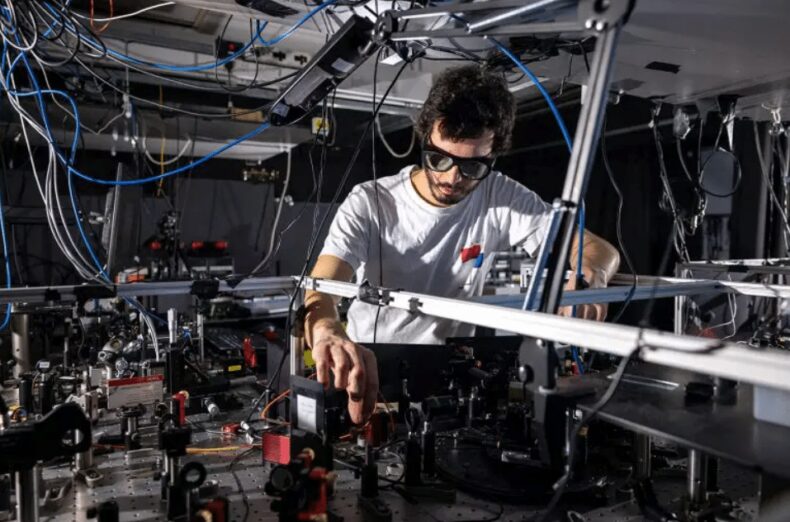Physicists from the Imperial College London have recreated the famous Double Slit Experiment, which yielded results showing light behaving as a particle and wave, exhibiting the dual nature of light in Time instead of space.
This experiment’s success shoulders heavily on materials that can change their optical properties in a fraction of a second. Which in turn could be used in new technologies that could help us understand the fundamental laws of Physics.
How Thomas Young’s Experiment Revolutionized Our Understanding of Light
Thomas Young at the Royal Institution in 1801 performed the Double-Slit Experiment which yielded the result that light acts as a wave. But, other further experiments conducted, yielded results that Light acts both as a particle and a wave, unraveling its Quantum Nature.
These Experiments had a huge impact and influence on Quantum Physics, revealing that not only light has dual particle and wave nature but also electrons, neutrons, and whole atoms.
Imperial College London Physicists led a team that has now conducted the experiment using ‘slits’ in time rather than space. In this experiment, they fired the light and made it pass through a material that changes its characteristics and properties in femtoseconds (Quadriliionths of a second) which allows light to pass through it at distinct times in quick succession.
The lead researcher of this experiment, Professor Riccardo Sapienza from the Department of Physics at the Imperial College London explained that their experiment reveals more about the fundamental nature of light and at the same time serves as a stepping stone to creating materials that can minutely control and manipulate light in space and time. The details of this experiment are published in the Journal Nature Physics.

The image above shows the project member Romain Tirole adjusting the equipment which was used in the study at the Imperial College London.
The original Double-Slit Experiment involved light passing through two thin parallel slits and directed at an opaque screen. To detect any light that passed through the screen a detector to detect this was placed behind the opaque screen.
Light splits up into two waves to travel through the slits as a wave. When these light waves emerged on the other side they interfered with each other. Where if peaks of two waves meet each other, they enhance each other, but when a peak and a trough of two waves meet each other they cancel out.
This process creates a striped pattern on the opaque screen with regions of more light and less light falling on it. Light can also be parcelled up and exist as particles called ‘Photons’. These photons can be detected and recorded that hit the detector behind the screen, which gradually builds up to the striped interference pattern.
Even if the researcher directed just one photon through the slits, the striped interference pattern still emerged, as if the photon fired split into two and passed through the two slits.
In the original version of the Double-Slit Experiment, the light changes its direction as it emerges from the physical slits, hence the interference pattern is written in the angular profile of light.
But, in the new experiment, the ‘time’ slits change the frequency of light altering its color. This yields in colors of light interfering with each other, enhancing and canceling certain colors out, creating an interference-type pattern.
The material that the team used in the new Double-Slit Experiment is a thin film of Indium-Tin-Oxide, which is used in most mobile phone screens. The Reflectance of the material was changed by firing lasers at it at ultrafast timescales, creating the said ‘time slits’ for light. The material’s reflectivity was found to be varying in femtoseconds, which showed much quicker laser control than the team expected.
The material they used is a metamaterial, which is a material that is engineered to have properties not found in nature. When the fine control of light of the metamaterials when coupled with spatial control, it could lead to the creation of new technologies and even analogs for studying the fundamental laws of physics like Black Holes and more.
The team wants to explore and study the phenomenon using ‘Time Crystals’ as a material next, which is similar to an atomic crystal but in ‘Time Crystals’ the optical properties vary in time.
Professor Stefan Maier, co-author of the research explained that time crystals have the potential to pave the way and lead to parallelized, ultrafast optical switches.













